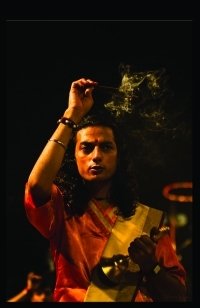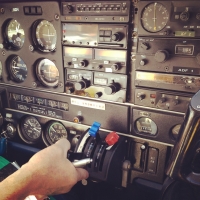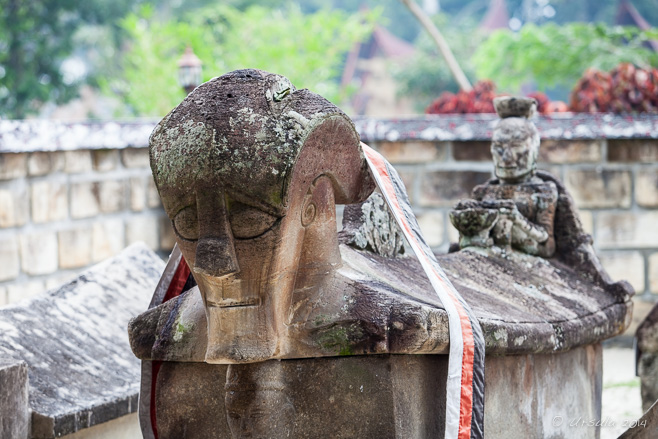
Makam Raja Sidabutar
The garden with the sarcophagi of the Kings of Sidabutar, reputedly the first people to set foot on Samosir Island in Lake Toba, North Sumatra, is an important cultural heritage site on that island.
The breadth of human culture is amazing to me: as much as there are similarities in the human condition the world over, there are also such differences in how people express themselves.
Sumatra is just one of the over-17,000 islands that make up the Indonesian archipelago; just one of the 922 permanently-populated islands. With its numerous ethnic groups speaking 52 distinct languages, this island alone represents a huge range of cultural diversity.
In North Sumatra, one of Sumatra’s ten provinces, most of the 13½ million inhabitants are Batak. Descendants of an Austronesian people who probably arrived in the region about 2,500 years ago, the Batak comprise “six (or nine – depending on whom you believe) separate groups with different (but related) languages and customs.” The most populous of these groups is the Toba Batak, centred around Lake Toba – the natural water-filled caldera of an ancient super-volcano – and on Samosir Island, the large volcanic island within the lake.
The fifth largest lake-island in the world, Samosir is a popular tourist destination, providing a glimpse into the rich cultural heritage and current lifestyle of the Toba Batak people. One traditional Toba Batak village is maintained as a museum (Huta Bolon Simanindo) and other special sites dot the island.
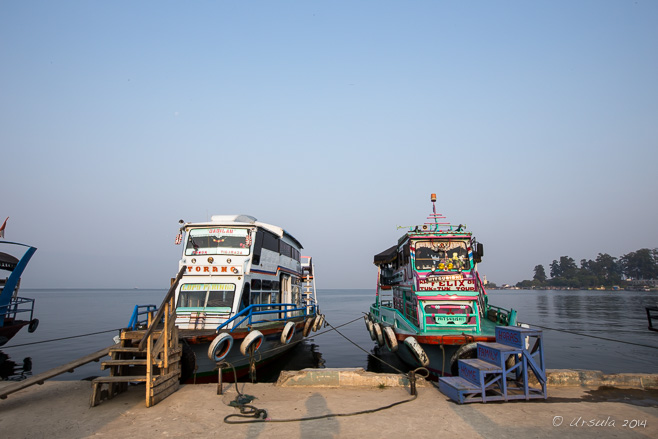
Ferry Boats on the Quay
The small town of Tuktuk on Samosir Island is an hour-long ferry trip across the lake from Parapat where we (like most tourists) were staying.
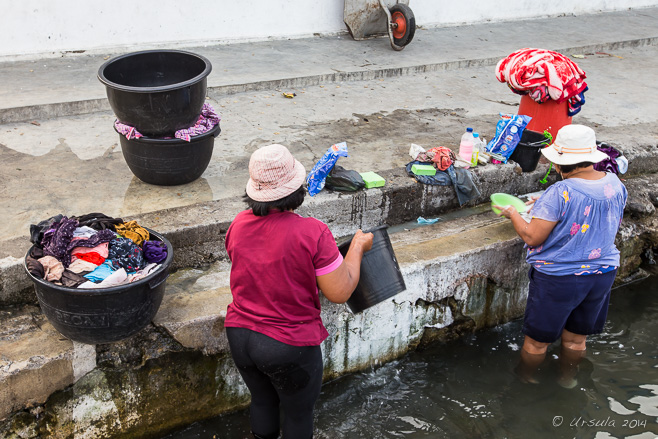
Women doing Laundry
As well as being a meeting point for the hourly ferries, Tiga Raja Harbour served as a good place to do the household laundry.

Into Tuktuk, Samosir Island
The curved roof of a traditional Toba Batak house, or “rumah bolon”, comes into view as we approach the island shore.

Rubbish
One of the big problems in relatively remote places like Samosir Island – especially those with high tourist numbers – is dealing with waste.

Tiny Buffalo; Huge Sea God
Although the majority of Toba Batak are now Christian, representations of their traditional beliefs are built into their houses and depicted in statues and shrines all around the island.

Mexican Sunflowers (Tithonia diversifolia)
The roads are bounded by wild flowering bushes as we climb into the hills of Samosir.

Roadside Grave
Elaborate memorials to beloved ancestors are never far away; …

Rice Field Mausoleum
… whether in a field or at the roadside, mausoleums of all ages and styles are everywhere.

Red White and Black Mausoleum
One particularly large mausoleum we passed was easily two stories high, and elaborately decorated in traditional Batak designs in the symbolic colours of white (the holy spirit), red (life force), and black (magic).

Makam (Tomb of) Ompu Raja Rosuhul Sihaloho
This site contains the remains of King Rosuhul (“Earthquake” – named so for his fabled ability to tame quakes) and about thirty of his descendants.

Grave of Ompu Raja Rosuhul Sihaloho
The stone sarcophagus is approximately 215 years old. It is less well-cared-for than another we visited (later) because the clan became poor, and no longer had the right connections.

Rumah Bolon in Disrepair
The traditional rectangular wooden homes, which housed up to five or six families, were beautifully made in their time, but many are very old and falling into ruins.

Toba Batak Houses
In some villages, traditional Rumah Bolon alternate with “modern” box houses with cladding and corrugated iron roofs.

Buffalo on the Roof
The traditional designs and symbols – like the buffalo which represents the power of the Chief – are beautifully maintained on some of the buildings.

Young Toba Batak Woman
Still, there is a desolate air around most of the villages.

Tugu – “Monument”
Whether they are tributes to ancestors and kings, or memorials of battles, monuments are everywhere.

Shop Keeper
I am always ready to examine (and often buy) locally woven fabrics in intricate designs.

Ambarita Village Home
Probably because of its proximity to a site of local importance, Ambarita Village felt more “alive” than many we passed.

King Siallagan’s Stone Chairs
Huta Siallagan or the “Stone Chair Village” in Ambarita was built by Si Raja Laga Sialagan several hundred years ago. The chairs were where the village elders sat to discuss crimes, decide guilt, and mete out punishment.

Huta Siallagan – Killing Stone
The ultimate punishment, decided in accordance with Pelebegu, a local Animist tradition, was by beating with a blunt object, then a ceremonial beheading, and finally the body was carved up for cannibalising. Punishments could only be decided on auspicious days according to the old Batak calendar.

The View from the Highlands
The view today is miles away…

The View from the Highlands
… from the ritual cannibalism of years past.

Market
To get to the most important attraction on the island, you need to ford the market of souvenirs and clothing.

“Another Guide Another Burial Site”
Visitors to the Makam Raja Sidabutar (King Sidabutar’s Tomb) are asked to wear a special sash as a mark of respect for the Sidabutar family, the ancient ruling clan around the Batak village of Tomok.

Makam Raja Sidabutar
According to stories, one of the Sidabutar lineage: King Ompu Ni Ujung Barita was an elderly man when he finally arranged to marry a woman named Anting Malela Boru Sinaga. She broke the engagement by refusing to carry a ritual cup without handles on her head. King Ompu Ni Ujung Barita used black magic to make her crazy as punishment. His sarcophagus depicts him on the front and Anting Malela at the back, carrying a cup without handles on her head as a sign of the ultimate obedience.

Local Man at Makam Raja Sidabutar

Carving at Makam Raja Sidabutar
The Sidabutar tomb site is well-maintained, and dotted with sarcophagi and small ritual carvings.

Hawker on the Ferry Dock
At the end of a long busy day, we are back on the ferry.

Boys on the Shore
Local boys race up to the ferry dock, disrobe down to their underpants…

Portrait of a Batak Swimmer
… swim out to the ferry, hang onto the mooring lines, …

Waiting
… and watch for the ferry passengers to throw money into the water.

Diving
The boys all dive after the folded notes, …

The Race is On!
… keeping us entertained until the ferry leaves…

Ferry on Lake Toba
… to take us back to Parapat.
From cannibal kings and black magic to tourism and young lads staying fit chasing money in the lake waters…

Times have changed and will continue to change.
I hope the Toba Batak can manage the change well.
‘Till next time!
Pictures taken: 19February2014

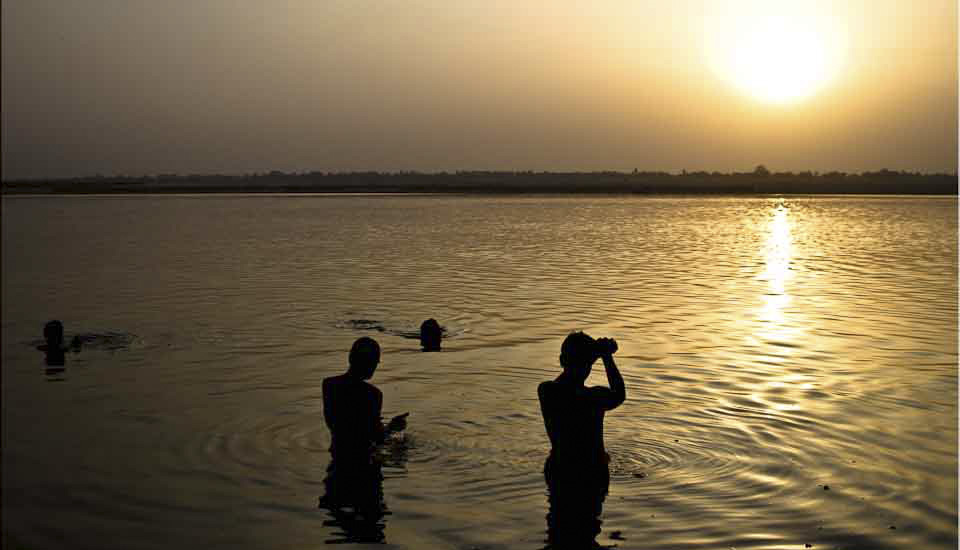



































.png)
